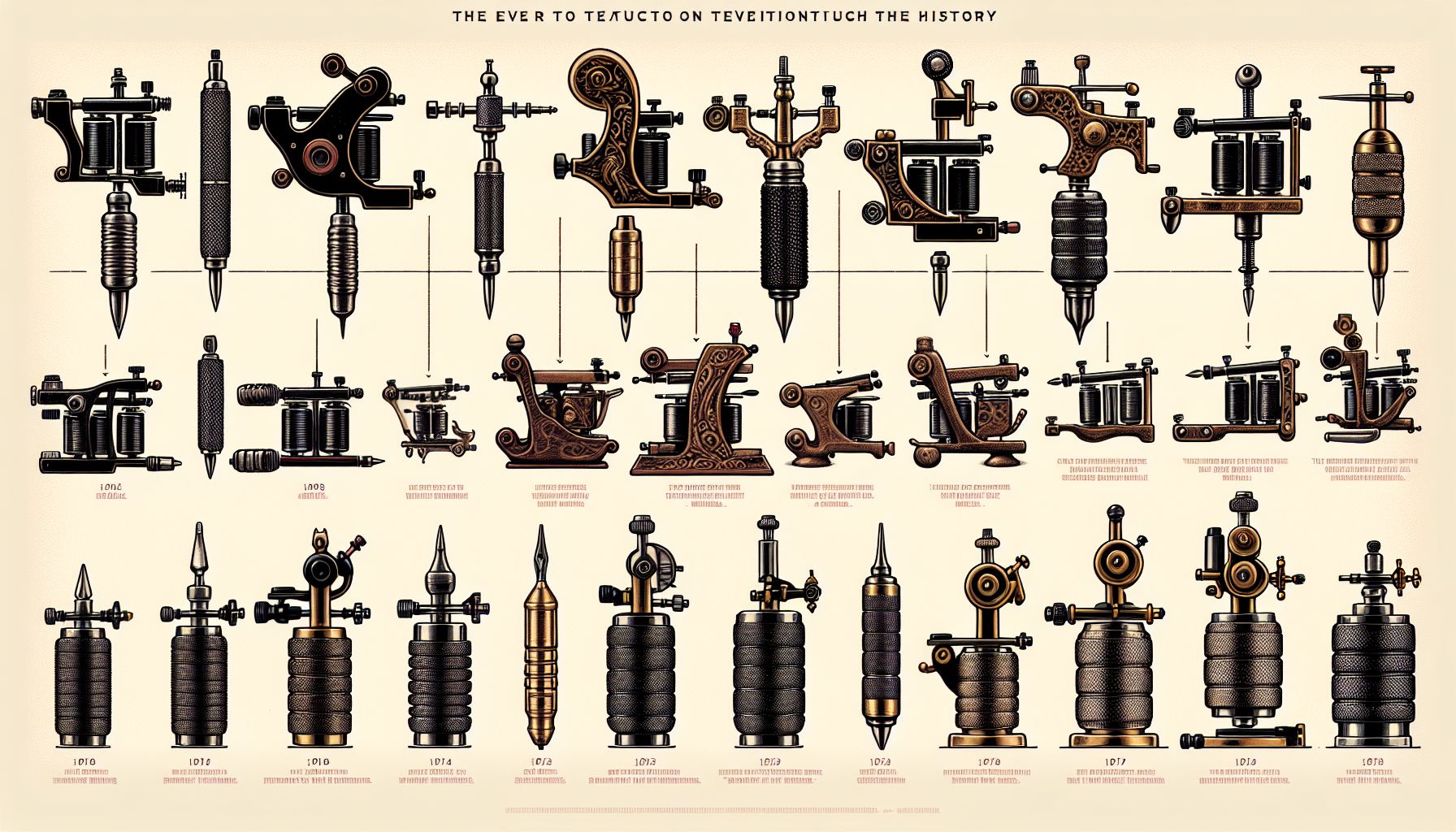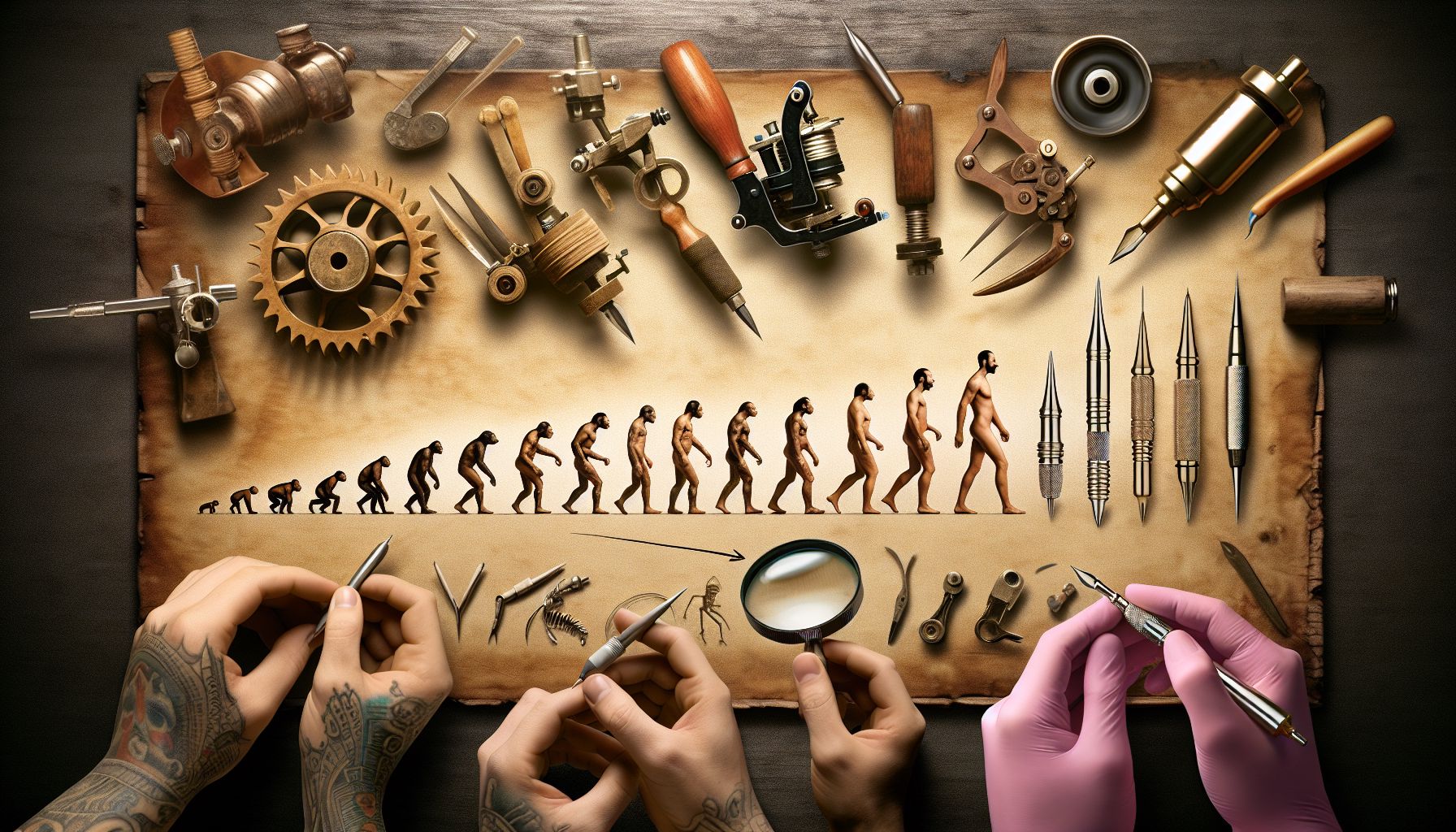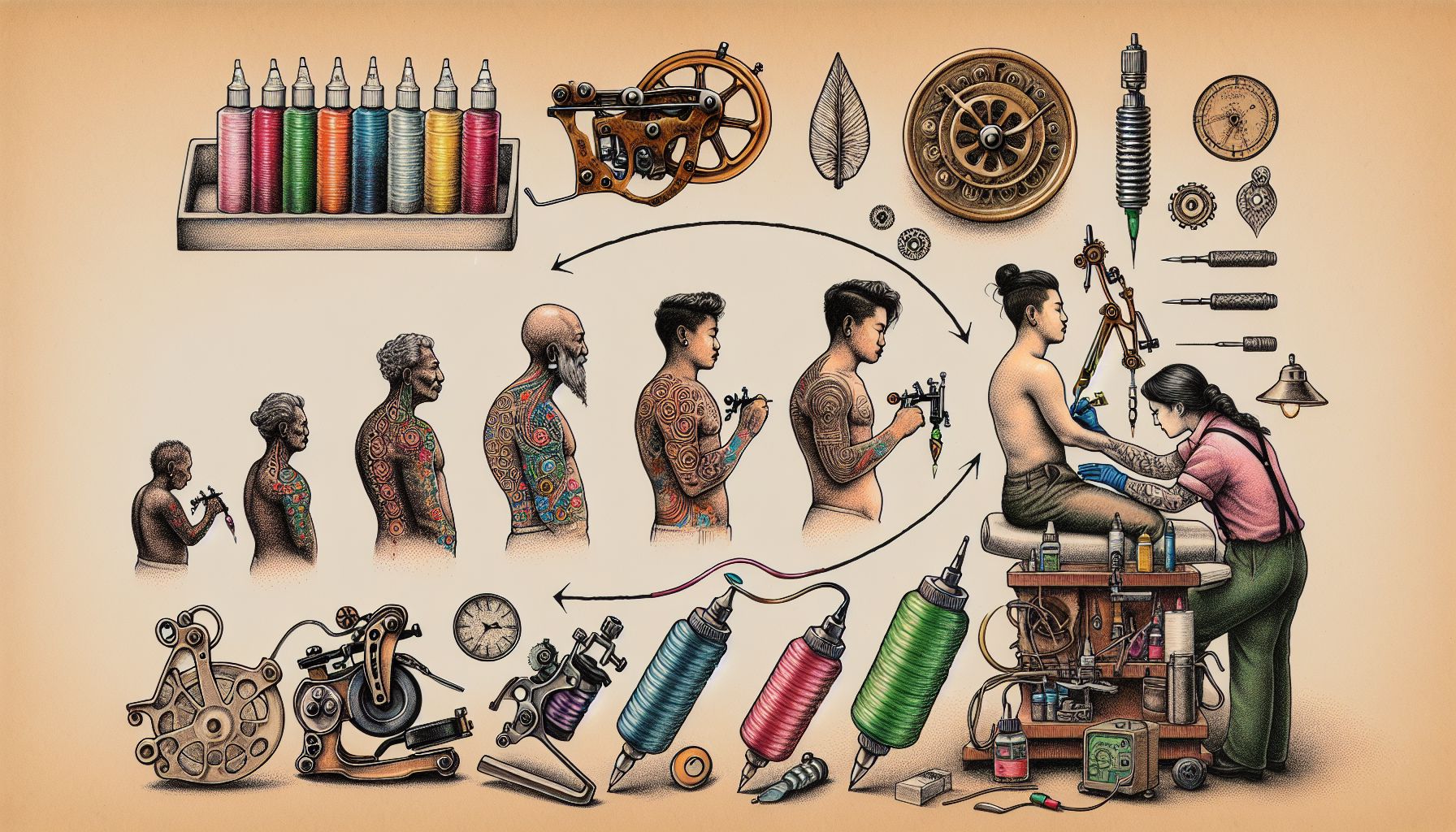Tattooing is an art form that has been practiced for centuries, and like any other artistic practice, it relies on both the skill of the artist and the quality of the tools they use. Today, I’m diving deep into one of the core components of any tattoo artist’s arsenal: the tattoo machine. From early innovations to the latest technological advancements, understanding these devices is crucial for professionals in selecting their tattoo supplies.
The tattoo machine has seen its fair share of transformation since the days of traditional hand-tapping techniques. It was the late 19th century when the first electric tattoo machine made its debut, revolutionizing the industry and leading us into an era where the term ‘tattoo supplies’ began to take on a whole new meaning. Drawing from my years of experience, I’ve seen firsthand how each machine can impact an artist’s work, and I’m eager to share this knowledge with you.
Understanding the Machine
Tattoo machines come in various forms, but they mostly fall into two categories: coil machines and rotary machines. Coil machines have traditionally been favored for their adjustability and the “give” that artists feel while tattooing, which can be crucial for shading and intricate work. Rotary machines, on the other hand, are known for their consistency, quiet operation, and ease of use, making them appealing for both lining and shading.
The Coil Machine
Let’s talk about the nitty-gritty details. Coil machines operate using electromagnetic coils which move the machine’s armature bar up and down, driving the needles into the skin. Artists often tweak their machines to their liking, altering the speed and force of the needle’s movement. My first coil machine was a real workhorse, and it taught me the importance of getting to know your equipment inside out. From adjusting spring tension to changing contact screw settings, each tweak could lead to a different outcome on the skin.
The Rotary Machine
The rotary machine, which uses a small motor to move the needle, offers a different experience. These machines have become increasingly popular as they’ve become lighter and more versatile. I recall transitioning from a coil to a rotary machine and the immediate difference in the weight and sound – it was a game-changer, allowing for more focus on the art rather than the machine’s mechanics.
Evolution of Technology
Tattoo machines haven’t just evolved in the sense of “coil vs rotary.” They’ve also seen a wave of technological advancements. Wireless operation, for instance, was something we could hardly imagine when I started out. Today, wireless rotary machines grant artists unprecedented freedom of movement, which is a boon during long sessions. This kind of innovation is where keeping up with the latest tattoo supplies pays off.
Choosing Your Machine
So, how should a tattoo artist choose? It comes down to personal preference and what suits your style. To those just starting, my advice is to try out different types. When I began, I had the chance to apprentice under an artist who had an array of machines. It was this hands-on experience that allowed me to find what felt right for my hand.
Remember that quality matters. As your guide through the world of tattoo supplies, I encourage investing in well-crafted machines. They’re not just tools; they’re extensions of your hand. The better the build, the better the results on the skin. And of course, always ensure that what you’re buying is authentic. The market is flooded with imitations, and they simply don’t measure up.
Maintenance is another critical aspect of choosing your machine. Proper care will significantly extend the life of your tattoo supplies. Regular cleaning and lubricating the moving parts of your machine will ensure that it performs at its best. I’ve serviced all my machines regularly, and it’s saved me more than just a few bucks over the years – it’s saved me from mid-tattoo breakdowns.
Final Thoughts
Tattoo machines are the heart of our trade. Whether you’re leaning towards a trusty coil machine with its versatility and traditional feel or the modern, smooth-running rotary machine, the key lies in understanding how different tattoo supplies can elevate your art. Technology will continue to push the boundaries, and we as artists should embrace these tools, adapt our techniques, and continue to create our best work.
As I wrap up this deep dive into tattoo machines, I urge fellow artists and shops to explore, experiment, and educate themselves on the various options available. It’s a combination of your skill and the quality of your tattoo supplies that will set you apart in this craft. Whether you’re leaving your mark with bold lines or the subtlest shades, the right tattoo machine can truly make all the difference.



